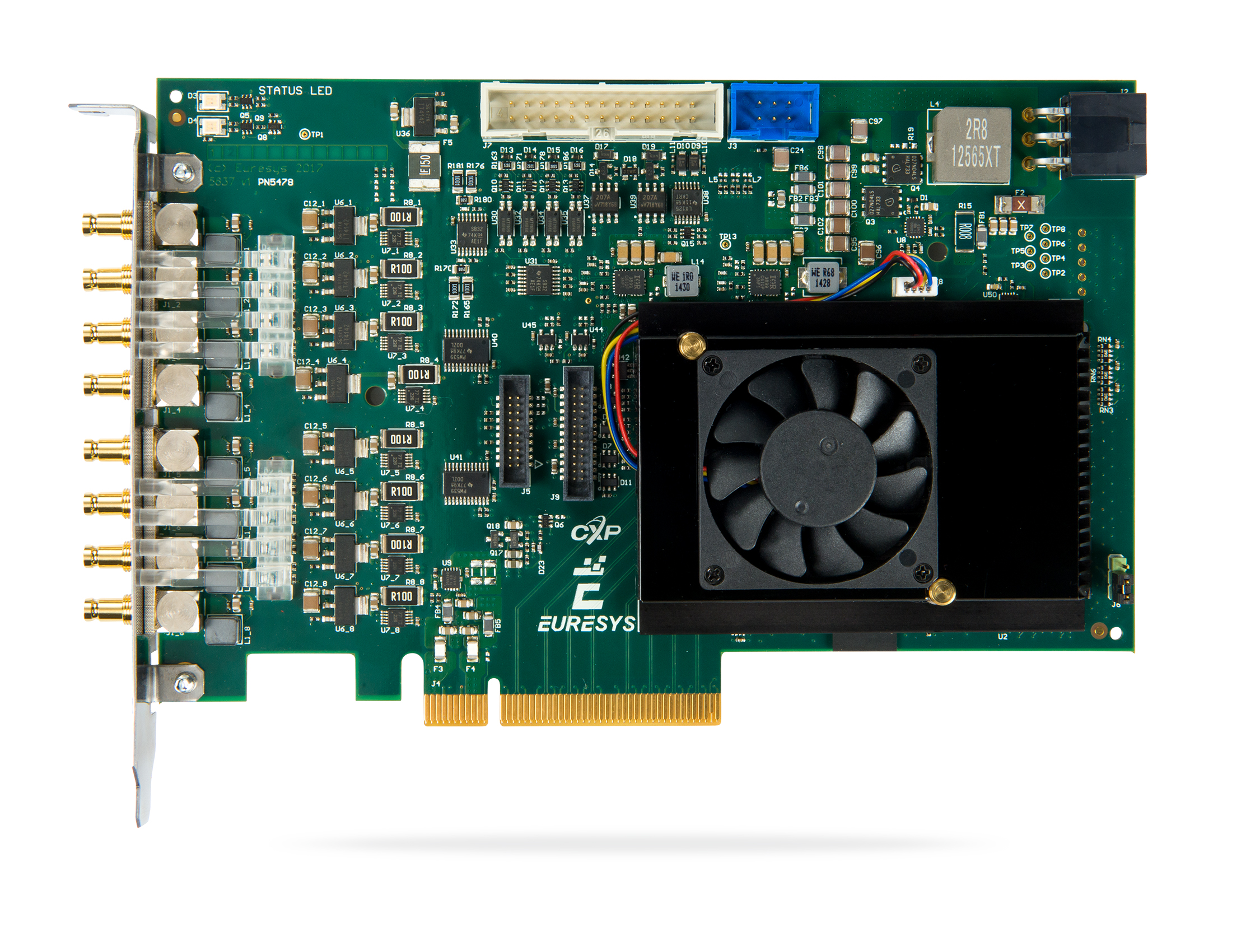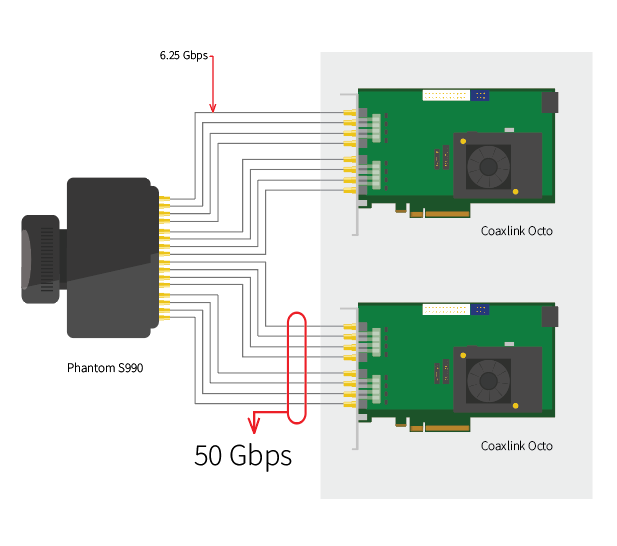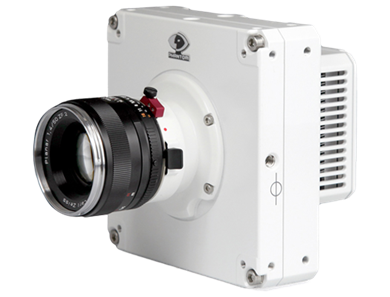New Camera and Frame Grabber Combination Streams Data at Twice the Rate of Existing Technology
Product /
03.2019
A new generation of cameras and frame grabbers that deliver higher than ever before levels of streaming data throughput provide major improvements in medical diagnosis and manufacturing inspection, among many other applications. As a case in point, image flow cytometry, a microfluidics based diagnostic technology, is being developed to diagnose cells by visualizing a very high throughput of single cells of a patient’s blood. This approach makes it possible to detect cancerous tumor and other cells that occur at such low concentrations that they are unlikely to be detected by small samples or less convenient laboratory methods. Higher data throughput rates and higher resolution in machine vision makes it possible to detect tinier defects in electronic products at higher speeds than existing technology.
.aspx)
Camera manufacturers have made great strides in increasing sensor image quality and direct data transfer speeds to provide the ability for images to be streamed at unprecedented resolutions and data rates. For example, Vision Research’s Phantom S990 streams 9 Megapixel (4K) images at up to 938 frames per second (fps), resulting in a data rate of almost 9 Gigapixels per second. This level of throughput has previously been available for storage on the camera for download and analysis after the fact. But today’s researchers and engineers need the ability to capture, display and analyze data in real time so that it can immediately be applied to solve real world problems.
The best approach to capture data at these high rates of speed up to now has been to utilize four CoaXPress 6.25 Gigabit (CXP-6) frame grabbers to stream the data on 16 standard CXP-6 channels which each offer 6.25 Gigabits per second over single 75 Ohm coaxial cables. CXP is the dominant high-speed interface for machine vision cameras and frame grabbers supported by over 50 vendors. It is scalable so multiple cables can be used to increase bandwidth in increments of 6.25 Gbps per channel.
The challenge is that the most powerful frame grabbers available up to now have supported no more than four CXP-6 channels while 16 CXP-6 channels are required to support the full 9 Gigapixel per second speed of the Phantom S990. Few computers have the four Peripheral Component Interconnect Express (PCIe) slots needed to accommodate these cards, especially considering that a graphics card is often required for this class of application. Furthermore, the need to four frame grabbers increases the cost of the application.

Coaxlink Octo
Euresys has addressed this challenge by introducing the Coaxlink Octo which provides eight CXP-6 connections for a total of 5,000 MB/s of camera bandwidth. This frame grabber provides the highest data acquisition rate in the industry, twice as high as the previously fastest frame grabbers.

Only two of the new Coaxlink Octo frame grabbers are required to support the highest speed digital cameras, a number of PCIe slots that can be easily accommodated by most computers. The new eight-channel frame grabbers typically cost 35% less than two of the four-channel frame grabbers they replace.
 Phantom s990 camera
Phantom s990 camera
The Phantom S990 camera outputs data in four banks each consisting of four ports. Each bank streams the data for two rows of the image and the banks move successively down the image sensor to stream the complete image. The Coaxlink Octo frame grabber gathers the outputs and rebuilds the full images. The image reconstruction is done completely in hardware through direct memory access (DMA) so it does not consume any CPU time. Euresys provides sample programs for specific cameras such as the Phantom S990 that users can use as a starting point to support any high-speed camera.
memento debugging tool
.aspx)

The Coaxlink Octo frame grabber also includes the Memento debugging tool which records an accurate log of events related to the camera, frame grabber, driver and application. It provides a precise log of time-stamped events across all streaming data with context information and a logic analyzer view. The tool delivers close to 1 microsecond precision, making it ideal for troubleshooting timing issues such as identifying cable, triggering and buffering problems.
The Coaxlink driver is 100% compatible with the GenICam standard so it will run with any frame grabber that complies with the standard.
As an example of applications for the new camera/frame grabber combination, the low sensitivity of conventional laboratory tests for circulating tumor cells (CTCs) in blood samples often causes them to fail to detect circulating tumor cells because there is approximately 1 CTC to every 109 blood cells present in the sample. In some cases the cancer metastasizes to the point that it is untreatable before it is detected. Flow cytometry can more quickly detect CTCs at much lower concentrations by analyzing images of the patient’s individual blood cells. In this way, flow cytometry can detect rare leukemia, squamous carcinoma, melanoma and breast cancer CTCs, increasing the likelihood that cancer can be detected while it is still treatable.
The combination of the Phantom S990 and the Coaxlink Octo frame grabber delivers unparalleled performance in flow cytometry and many other applications. Tests can potentially be performed in half the time required by currently available cameras and frame grabbers, greatly reducing the discomfort to the patient and the cost of the test. All in all, the ability of the new camera/frame grabber combination to stream vision data at twice the level of throughput as current technology provides enormous benefits to a wide range of vision applications.